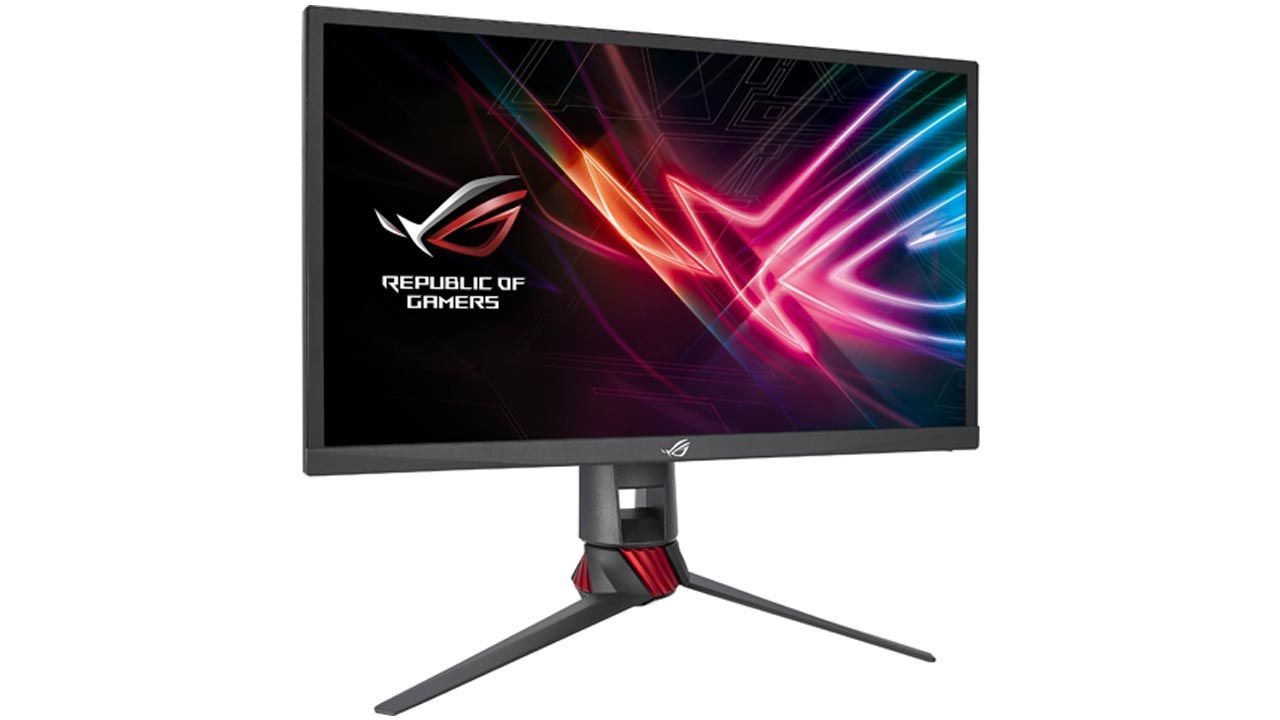
[ad_1]
ASUS’s ROG Strix XG248Q is one of the few 240 Hz gaming monitors to sell in India. It’s got a 23.8-inch viewable area and supports both, FreeSync and G-Sync. Being an ROG Strix unit, the monitor features the signature red and black design language. Typically, excelling in one aspect always has its downsides in all the remaining aspects of a monitor and we’ll have to check whether the ROG Strix XG248Q suffers from the same issues. This particular model has been available in international markets for quite some time and has only recently come to the Indian market. It is currently available for Rs.37,000 on certain ecommerce websites with a 3-year manufacturing warranty.
Build
If you’ve seen some of the recent ROG gaming monitors, then you’ll know what to expect from the ROG Strix XG240Q. You have 24-inch front side with bezels which are about a centimeter thick on the top and the sides whereas the bottom bezel is slightly thicker than the rest. ASUS calls these super-narrow but we wouldn’t call it ideal for multi-display setups. It’s a subjective judgement which varies from user-to-user. Otherwise, the monitor itself has a very clean look from the front. The bezels themselves aren’t deep (z-axis) and they have a matte finish so that they don’t end up reflecting much from the monitor or from external light sources.
The ROG Strix XG248Q makes use of a 3-point stand which makes it more stable than practically all other types of stands. There’s absolutely no rocking motion even on uneven surfaces by virtue of using just 3 points. There’s an ROG logo projected from the elevated base of the monitor onto the surface. You can adjust the brightness of the same via the OSD panel. Right above the base is the swivel junction which swings 50 degrees clockwise and counter-clockwise. Atop the junction is a small cutout for slipping in your cables.
The panel can also be pivots by 90 degrees in a clockwise fashion and the height is adjustable by 12 centimeters. Lastly, the panel tilts 20 degrees forward and 5 degrees inward. All these adjustment features coupled with the alignment overlay within the monitor OSD helps with ensuring an even-looking multi-display setup.
On the rear of the monitor, you have the OSD keys along with one 5-way joystick and a circular RGB LED array around the mounting point. The joystick is a convenient feature but the trouble with it is that if it does break then you lose access to 5 inputs in one go. We felt that the joystick on the XG248Q required very little force for actuation. The entirety of the rear I/O is covered with a plastic cover to maintain an aesthetically pleasing look.
Speaking of the I/O, the XG248Q has 2x HDMI, 1x DP, 3.5mm stereo out, USB 3.0 passthrough and 2x USB 3.0 ports connected to the said passthrough. The ports aren’t gold plated and you might end up bending the cables at an awkward angle if you wish to route them via the plastic I/O cover. There’s a little plastic edge that juts out right around the panel opening which helps keep the cables in place when you’re affixing the plastic I/O cover. Bending thick cables along a 90-degree angle in such a small space could lead to the cable or the port getting damaged. The DP connector which goes into the farthest port is most susceptible to getting damaged in this manner.
Performance
The panel in the XG248Q is by Innolux (M238HHJ0-K70) and is rated for 200 Hz refresh rate but the ASUS website states that the monitor has a native refresh rate of 240 Hz. Most panels that are capable of 240 Hz are currently TN panels and so is this one. There are IPS panels capable of hitting 240 Hz but they are quite expensive at this point and considering that the existing TN ones aren’t cheap, one can only imagine how much the IPS panels are going to cost.
The panel has a contrast ratio of 1000:1 and has a W-LED backlight. It’s also a 6-bit panel with FRC to simulate 8 bits. The minimum response time is 1ms but the average can be about 8ms. In our colour reproduction test prior to calibration, the maximum delta E observed from among all the patches was 19.09 and the average was 2.62. The average is a bit towards the higher side and anything above 3 can be visually identified by users. We then began calibrating the monitor and for that we had to drop the Red and Blue values by 3 each to get the colour values proper. Gamma was kept at 2.2. Post calibration, the average delta E came down to 2.1 which is still not great but it certainly is better off than earlier.
When we switched the background to a true black image, we noticed a lot of clouding. This is a very subjective element that might be irksome to some users. It can be quite prominently observed when you’re playing video games in which most of the visuals are dark such as the recently released Wolfenstein: Young Blood and the recent Resident Evil 2 remake.
Coming to the brightness, we clocked it at 380 nits which is close to spec and the contrast ratio was measured to be about 970:1 which is very close to spec as well. It’s not the highest we’ve seen from ASUS.
As for brightness uniformity, we measured an average Delta E of 1.45 which means the panel is very uniformly lit. Post calibration, the average power draw was about 31 Watts.
[ad_2]
Source link






